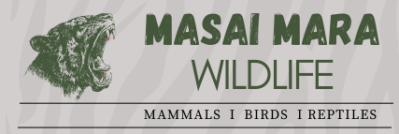- Common Names: Aardvark, Ant-bear
- Scientific Name: Orycteropus afer
- Swahili Name: Muhanga or Kukukifuku
- Maasai Name: Enaishiri dama
- Size:
- Head-Body Length (HBT): 220 cm (87 inches)
- Gestation: 30 weeks
- Recognition: The Aardvark is a robust, hunch-backed creature with short legs, a long pointed snout, large ears, and a powerful kangaroo-like tail. Its distinct appearance, including its long ears and pig-like snout, makes it one of the most unusual animals in the African savanna.
Habits and Behavior
- Nocturnal and Elusive: The Aardvark is a strictly nocturnal animal, rarely seen during daylight hours. It spends its days resting in burrows it digs itself, and it emerges at night to forage for food. Its elusive nature and secretive lifestyle make it a rare and exciting sighting for safari-goers.
- Digging and Feeding: Aardvarks are equipped with strong claws—four on their front feet and five on their rear—that they use to tear into termite mounds and anthills. Using their acute sense of smell, they locate colonies of ants or termites, which they extract with their long (30 cm/12 inches), sticky tongue. In a single night, an Aardvark can consume up to 50,000 termites or ants, making them formidable formicivores.
- Burrowing Expertise: These animals are expert diggers, capable of creating complex burrow systems. The burrows serve as their homes and provide safety from predators such as lions and hyenas. Interestingly, Aardvark burrows are often taken over by other animals, including Warthogs, Hyenas, and various reptiles, making them vital to the ecosystem.
Unique Anatomy
- A Natural Excavator: The Aardvark’s claws are designed for digging through tough soil and termite mounds. Its muscular forearms help it excavate quickly, which is essential for both foraging and creating burrows.
- Long, Sticky Tongue: The Aardvark’s tongue, coated in sticky saliva, is perfectly adapted for slurping up termites and ants from deep within their colonies.
- Tail for Balance: Its long, heavy tail, particularly white-tipped in females, acts as a counterbalance, especially when it stands upright or during male boxing matches (similar to kangaroo behavior) during mating season.
Habitat
- Where to Find: The Aardvark inhabits various environments, including acacia scrub, savanna, and open grasslands. Although it can theoretically be found across these areas in the Masai Mara, it is extremely rare to spot. Due to its nocturnal lifestyle and elusive nature, sightings often occur by chance, sometimes when an Aardvark is flooded out of its burrow after heavy rains.
Diet
- Feeds on: The Aardvark’s diet consists almost exclusively of ants and termites, which it detects using its acute sense of smell. Its powerful claws allow it to break into mounds, while its long tongue extracts the prey.
Conservation Status
- IUCN Status: Least Concern. Despite being elusive, the Aardvark is not currently at high risk of extinction. Its wide distribution across sub-Saharan Africa helps maintain population stability. However, habitat loss and hunting for its meat in certain areas pose potential long-term threats to local populations. Human expansion and agricultural practices can also disrupt the Aardvark’s foraging grounds and burrowing sites.
Unique Traits
- Name Origins: The scientific name Orycteropus afer comes from Ancient Greek—orykteropous meaning “digging-footed” and afer referring to Africa. The English name “Aardvark” comes from the Afrikaans/Dutch word meaning “earth pig,” referencing its burrowing habits and pig-like snout.
- Exceptional Digging Abilities: Aardvarks are capable of creating extensive burrow systems, which are often repurposed by other animals, playing a key role in shaping the environment.
- Boxing Matches: Male Aardvarks engage in dramatic “boxing matches” during mating season, where they stand upright and use their tails for balance as they fight for mates.
Interesting Facts
- Role in the Ecosystem: Aardvark burrows are important to many species in the savanna. They provide shelter for other animals, such as Warthogs and reptiles, once the Aardvark has moved on.
- Rare Sightings: Due to their nocturnal nature and secretive habits, encountering an Aardvark is a rare experience for even the most seasoned safari-goers. They tend to move quickly across the landscape, often making them difficult to track.
In conclusion, the Aardvark is one of the most enigmatic and fascinating animals in the Masai Mara. Its nocturnal habits, expert digging skills, and unique appearance make it a rare and coveted sight for safari enthusiasts. Though listed as “Least Concern” by the IUCN, continued habitat protection will be essential for ensuring the survival of this ancient, solitary creature.
